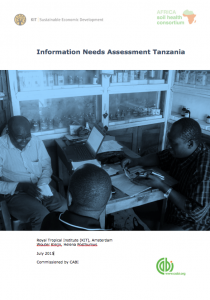What we know about information needs of farmers
Duncan Sones writes:
The Legume Alliance in Tanzania encouraging smallholder farming families to grow common beans. First, because it makes good economic sense and second, because legume improve soil fertility by adding nitrogen. Growing legumes can add the nitrogen equivalent to 2 bags of urea per hectare, which is available for crops in the following year.
This is all good – however pest and disease problems, climate uncertainty and a lack of access to the farm inputs required, mean that some farmers in Tanzania are considering quitting bean growing. So, getting the right messages to farmers to address these challenges and addressing the supply chain issues – represent the dual challenges the Legume Alliance will need to address.
Farm Radio International and KIT (the Royal Tropical Institute) have done useful research with farmers to see how we can package research. This is a summary of what they found.
The key messages are encouraging farmers to grow better beans and keep them longer…
Get the right variety of improved seed: Farmers prefer certain varieties for various reasons, including marketability of the variety, resistance to drought and diseases, taste, and availability of seeds. But FRI found farmers, especially women farmers, need more information on the availability of improved bean seeds in agrodealer shops. Promoting improved varieties as a solution to some diseases ,and overcoming drought, counter the two biggest challenges and risks farmers face. Farmers also need to be encouraged to replace their seed every 3 seasons to maintain the quality of the grain and the yield at harvest time.
Add fertilizer: Farmers interviewed did not understand the importance of applying fertilizer on common beans. P fertilizer will increase the yields – but also healthy plants are more resilient when attacked by pests or diseases. So fertilizer is part of an overall risk reduction strategy.
Good agricultural practices: Farmer did not know to apply the correct spacing and planting methods as a means to increase their yield – although most planted in rows to make weeding easier.
Use better post harvest storage: Post-harvest loss as it leads to the low return from beans. Farmers talked about storage techniques, such as use of airtight containers, and/or spraying of pesticides i.e. actellic dust to overcome post harvest losses from pests. So any campaign needs to go to post-harvest recommendations.
KIT also asked about what the materials should look like. Farmers noted:
- text should be limited,
- more photos should be used
- photos should be depicting real life situations and local farmers as much as possible
- text should not be too small as farmers often have difficulty reading
- paragraphs should have a clear subject line at the beginning of each paragraph
- written material should be of durable quality paper
The findings of the KIT research include that information material production and dissemination is an intricate process that takes several steps. Determining the right content and format is key, and this can take quite some time. But even the ‘perfect information material’, will not reach farmers or intermediaries without the right dissemination strategy.
This is a useful check list for the Legume Alliance to use over the coming months.

